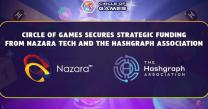IOHK Calls Out Ethereum’s Casper Protocol In Favor of Own “Ouroboros”
Photo by Rob Bye on Unsplash
Based on two social discussions over Reddit, H.K.-based IOHK, the parent company of Cardano and Ethereum Classic blockchains, released a detailed comparison between Casper and Ouroboros, two proof-of-stake protocols.
IOHK Hits Out
Starting with the fundamentals, IOHK noted that Ouroboros is duly analyzed and contains a formally specified assumption for ensuring security guarantee. The proofs, model designs, and mechanism descriptions are all made public, thus making protocol properties, correctness proofs, and underlying assumptions open for scrutinization.
The Ouroborous protocol, as written in the official statement, is said to provide the “strongest possible guarantees” regarding the stakes validating transactional operations.
For the purposes of this comparative study, IOHK referred to the original version of Ouroboros published in 2017, including a majority of comments from Praos and Genesis updates, and the Friendly Fidelity Gadget (FFG) white paper for Casper, published in 2017 as well.
IOHK pointed out the absence of published, publically available sources in the Casper protocol confirming its mode-of-operation or proving verifiable guarantees about the system. In this regard, the foundation stated Casper provides “much weaker guarantees” about the adversary stakes needed to operate the blockchain network, in addition to publishing several other points for proving their protocol as superior.
Casper’s Woes
For the uninitiated, Casper is an innovative proof-of-stake system defined by Ethereum developer Vlad Zamfir in November 2017. The protocol relies on all validators staking a portion of their ethers to validation transactions on blocks; rewarding the larger stakers with a higher reward and vice-versa.
Malicious actors are quickly identified and appended from participating in the system, which triumphs over a proof-of-work protocol by mitigating the risk from mining groups participating in the dreaded 51 percent attack.
The Face-off
The foundation compiled several aspects to compare, a few of which are listed below:
Falsifiability of Claims
In the Ouroboros protocol, the participants’ programs are continually defined by the system, including interactions, transactions, executions, and communications with others. This prevents a corruption of the system by nefarious participants. Furthermore, the model helps satisfy mathematically-formulated security guarantees and liveness properties for the protocol.
IOHK believes such a system is immensely well-defined and leaves nothing to “interpretation or reader perspective.” In contrast, the foundation states Casper has no such publically available documents or models present, rendering it “impossible” to prove the “correctness” of the Ethereum protocol.
The statement added:
“Good design intuition and best effort are just not sufficient when a ledger consensus protocol is supposed to carry assets worth billions.”
“Proven” Ledger Consensus
In terms of ledger consensus, IOHK defines the Ouroboros protocol as “proven” to liveness under clearly defined assumptions. However, Casper is merely a PoS enhancement atop a PoW “block proposal mechanism,” meaning the guarantee of the system’s security depends on the security of the proposed mechanism.
IOHK pointed out the authors of Casper themselves noted that “a wholly compromised block proposal mechanism will prevent Casper from finalizing new blocks,” adding that certain versions of the Casper protocol, such as Casper FFG-RPJ, are “incomplete” and unaccompanied by any verifiable security mechanisms.
Sharding
IOHK compared its Hydra protocol to one of Ethereum’s most-awaited updates – Sharding – a proposed mechanism that validates transactions via node clusters specific to defined geographies instead of the globe. On paper, the protocol is primed to parabolically scale transactions as a large amount of processing power enters the system.
The Hydra is said to be released shortly, along with a detailed white paper describing the problems solved, solutions deployed, mathematically functions used, and evidence of all proofs used.
Meanwhile, IOHK called out the Sharding update’s lack of any documentation in terms of protocol description and quantifiable security proofs.










































